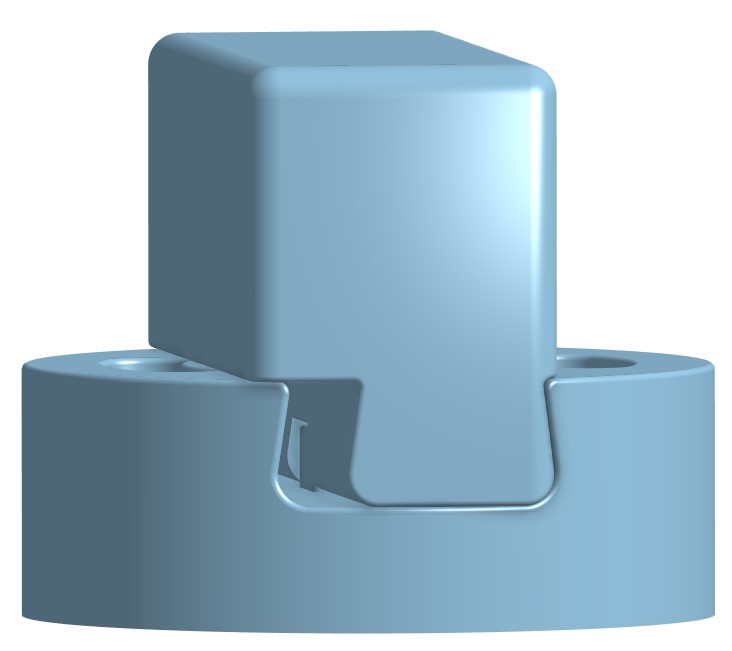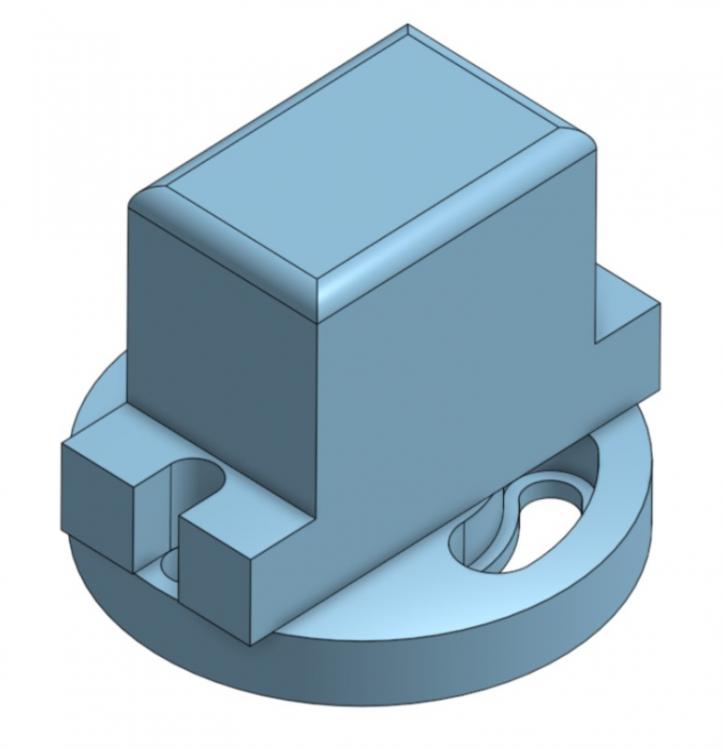-
Posts
42 -
Joined
-
Last visited
Content Type
Profiles
Forums
Articles
Gallery
Downloads
Events
Posts posted by MikeAlmogy
-
-
2 minutes ago, Latticino said:
Not enough info. Series or parallel. Sketch your work. Three phase is a little different than single if I recall. Something with square roots. Look it up. Resistance of individual coils doesn't change, just overall resistance of the circuit. Need to know how much poweris required for the box you designed and select coils and circuiting to match, then controls to suit. Joppa Glassworks used to have an excellent design manual for that. I'm just a Mech E, you need an Electrical engineer. Maybe Steve can help you.
I edit my original message after running some more numbers. No 3 phase.
-
Ok, just to make sure i got it right.
I can use 2 coils in serial then connect them to another 2 serial coils in parallel.
My numbers are 12.1 ohm resistance, 18.1 amepre and 4000 Watt.
Am i wrong? this is exactly what i want.
Mike
-
Hi and thanks :-)
I will see what i can do. In anyway i think i'm screwed.
Thanks
Mike
-
Hi all. I hope that i'm in the right forum. If not please transfer this post to the right one.
So i need to built a heat treatment oven for a client.
I got the refractory insulation bricks, i notched/curved them to the coil diameter using a router and now i'm working on the steel box in which they all be placed.
The design in for 4 heating coils of 4000W, 240V each. one on each side of the box. The opening will be from the top and the steel will be hanging from the top.
My question is how to connect the coils. In parallel or serial.
My goal is to use as lower amperage as possible. It is a single phase oven.
I have a small background in electricity and electronic and i do understand the principales between parallel and serial connection but can not make up which will use less amperage.
Since the coils are 240V i'm not sure if that means that i can even connect them in serial. since the voltage on each coil is 220/4. how will it effect the coils?
In parallel, the voltage is 220V on each element but the current is the sum of all currents. So it might be too much then i can provide.
I feel that i'm missing something or do not understand something.
Thanks,
Mike
-
Thanks :-)
I do not know how to calculate the flow rate. The rest is more easy.
But, after talking to Uri Hoffi, he told me just to do trial and error. It will probably be more efficient then all the calculations since, as you wrote, i have no idea if my burner run at maximum efficiency.
Thanks :-)
Mike
-
Hi all.
Like the title said, how can I calculate the btu output of my self made burner?
My working pressure is 10 psi, the burner gas orifice is 0.8.
The gas is Butane, not propane.
Thanks.
Mike
-
Thank you.
I know all the additional info, i just did not think it was necessary.
An electrician will look at it after i finish, especially if i will need to use 3 phase. However, i do have this furnace electric circuitry, it is just that the entire furnace got totaled on the move and i need to rebuild it. I can just copy but i want to understand and improve whenever i can.
BTW, 200+ liters are calculated from the internal dimensions of the clear space. Now thinking of it, when i heat the furnace to X degree i also heat the isolation material. Meaning that the dimensions are way way bigger. No?
It appears that 3 phase furnace is a must. xxxxxxxx
-
19 minutes ago, ThomasPowers said:
Without knowing anything about how it's going to be lined you are basically asking: "I have a bucket with a hole in it; how long will it take me to fill it?"
Ok, i get that.
After some calculations, it appears that i have a 210 liter furnace.
or about 7.5 cubic feet.
I will be using Kathal A1 wire. My power is 220V but i can go 3 phases if needed, i really prefer not to.
What other info do you need?
-
Hi all.
If this topic have already been covered then i will be most thankful for a link.
I want to build an electric furnace, Both for heat treatments and for pottery.
I have a given dimensions and i need to figure out what size and resistance coil i need.
There are lots of calculators out there but they all "attack" the problem on a different angle then the one i want.
Basically my problem is this: I have a space that i need to heat (the inner space of the furnace) but i have no idea how long of a coil i need. More then that, i do not know how many watts i need to heat the space in a reasonable time.
When i'm building a gas forge i know that in order to get good results i need X number of burners (of a certain type and characteristic) in order to heat a Y area. I have no idea how many watts i need to heat a certain area in a reasonable amount of time.
I saw a youtube video of a guy called VegOilGuy who build a melting furnace of 1200 degree but it takes him 3 hours to achieve that.
Thanks,
Mike
-
I do not have those machines. Not sure that i need to. I have a simple small manual mill. Not micro mill, Schaublin 13.
Like i said, doing this project depends heavily on my ability to actually do it. If after i will try i will see that i need more special equipment (and expansive one) or that my milling and accuracy skills are lacking, i will drop the dovetail and go to simple bolts solution.
Thanks :-)
Mike
-
Thanks.
Not sure what shaper is, google show me machines similar to the one i got.
The 5mm is just to finish things up.
-
Thanks :-)
i do not have to use a costume cutter since i can tilt my mill head to the desire angle and simply use a 5mm round tip strait cutter.
Anyway, my shop is under construction at the moment so it will take some time for me to start this project (unless i will be impatience).
I need to do some testing before using my high carbon steel.
-
all my dies will have the same size of dovetail.
To be honest, still not sure if it is the right solution for me, depend on my milling skills and equipment.
-
Thanks, but wouldn't be easier and more accurate to have one side as a fixed plane?
-
Ok so the current design is like that:

What do you think? it has 10mm wedge.
-
It will have tooling of it's own but i do like the idea of unify tooling or at least concepts. not sure it is the right word.
Anyway, for now it looks like dovetail won. I just need to figure out the angles and technique to actually do it. I thought that i got the right machinery to do it (I got Schaublin 13 mill) and i need a 5mm cutter to do the final angle cut. I also need to know the angle of the dovetail but in worst case i will use 10 degree angle.
Thanks,
Mike
-
yes sure studs.
Well i'm not sure yet what to do. still thinking of it.
The whole idea is to unify my die for power hammer and hydraulic press (which i did not built yet).
The power hammer is small. about max 20kg. The press however is the biggest i can build, hopefully 50 metric tons.
-
I got one. I have a mill. The question now is if to do dovetail or bolts like i posted earlier.
-
-
2 hours ago, Judson Yaggy said:
Rough it out square. Tip the sow block, not the mill head. Finish cuts with a ball end mill cutter.
Steel hates a sharp corner.
not sure what you meant tipping the saw block.
-
Hi all.
Here is my design for my power hammer (Ron Kenyon simple air hammer with Larry Zoeller modifications) die.
At the moment it is just the base but i run into a little problem/dilemma.
The problem is with the dovetail.
Currently i'm using a 50mm diameter, 20mm~ height, 60 degree, dovetail cutter. However, it's angle is way more steep then the angle i see on other power hammers die and bases (ram and anvil).
It is very easy to use the dovetail i got since i only have to use one tool to do it and it is pretty fair and simple. However, i'm not sure that it is the right thing to do.
How can i cut the base and die dovetail? i do not see any specific tool to do it. The die itself is relatively easy and in the "worst" case i can do it in two parts, one for the dovetail and other for the head itself with the die design.
But the base is hard. I can tilt the head of the mill to cut an angle but i will have residual marking and grooves on the base of the dovetail, which i think is not very good.
Any idea?
Thanks,
Mike
-
I thought about it and after i will finish organizing my workshop i might even do that. It could be fun.
-
I was told to go to Timna national park (witch was a very big copper mine in it's time) and to bring some bags and a shovel. I wonder if the one who told me was serious....
-
You got a point there...but it does look like a nice thing to do. Anyway, pointless since i have no idea from where to get ores.
I will post some new burner i am building soon. need to fabricate a blower to it and take some pictures and clips. Will post soon.



heat treatment oven coil connection.
in Induction Heating, Oil forges, etc
Posted
I'm sure that the actual numbers are different.
My wife father is an electrical engineer. I will run the circuit design and numbers with him.
The next obstacle is to figure out how to use a 2 phase setup in order to lower the amperage from each phase, but this is more complicated for me at the moment so I need to run it with him.
My original thought was to put each serial coil on a different phase but it is not how this works so a professional help is needed.
Thanks for helping me figure the basics out.
Thanks!